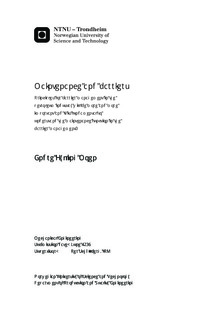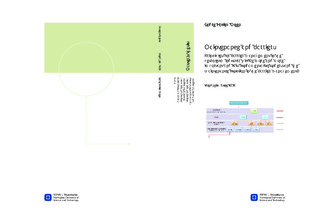| dc.description.abstract | SummaryThis thesis' sets out to analyse and present the purpose and meaning of safety, maintenance functions and management, maintenance indicators, barrier management and the importance and dependency between those. In addition, this is done in relation to the petroleum industry in Norway, and in collaboration with DNV GL, to develop an improved concept of barrier management. The analyses, discussions and conclusions are done at the basis of earlier accident reports and relevant literature.Safety is the overall process of ensuring a safe environment for every included and associated object. A function that is designed and developed to maintain safety is dependent on frequent maintenance in order to maintain its functionality and capability.One of the four top priorities in the Petroleum Safety Authority Norway's future development program is the improved integration of barriers and barrier management. Barriers are often defined as an obstacle, or a function, to prevent any form of hazardous energy to penetrate at an unwanted area, process or situation. The present situation in the industry indicates deviations in the common understanding and usage of barriers, and there are several areas of potential improvement.In barrier management and the phase of monitoring and improving existing solutions, maintenance has a significant role of making the barriers more relevant, efficient and resilient due to changes, time dependent wear and modifications in the systems. To utilize and control the barriers at the highest level possible, the need for an organised management is required. This includes maintenance, which is an essential process in barrier management of proactively ensure the barriers' continuous improvement and resilience.Maintenance indicators in accordance to barriers could be integrated in barrier management with the purpose of revealing weaknesses and areas of improvement. Backlogging is a maintenance indicator, which reveals if planned and preventive maintenance activities are performed in accordance with the scheduled plan. Backlogging is often measured in days or weeks. Another maintenance indicator is number of errors revealed during maintenance and testing. This indicator measures the ratio of errors in a barrier, after performing a test or maintenance operation. A barrier function often consists of several barrier elements, in which the barrier elements could be both technical, operational and organisational. Thus, maintenance functions and indicators are necessary to maintain and improve the elements. It is important to note, however, that maintenance is not regarded as a direct barrier element in itself.This survey has developed a concept suggestion in cooperation and relation to DNV GL, with the focus at future barrier management guidelines. The emphasis has been on implementing maintenance activities and potential maintenance procedures in the barrier management within areas where earlier/present weaknesses are identified. More specific, a DNV GL concept of internal cooperation and exchange of experience is presented. | nb_NO |

